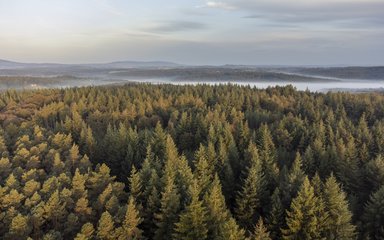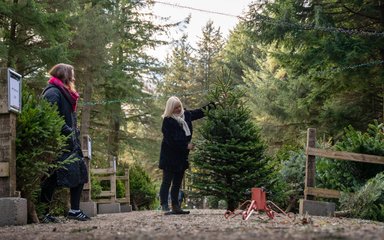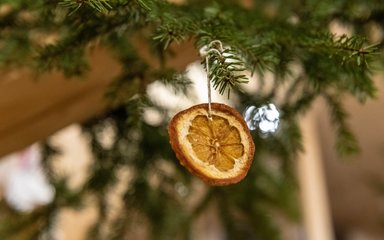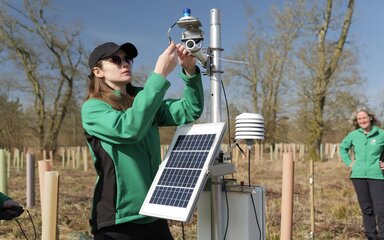
As you carefully place the topper on your Christmas tree and wrap sparkly lights around its branches, take a moment to think about the species of tree you’re decorating. Our changing climate may affect it, and we’re involved in ground-breaking tree research to find out more.
More than just a Christmas tree
Norway spruce is widely grown for the Christmas tree market, along with Nordmann fir and lodgepole pine. The fragrant, bright green needles and full, rounded shape make Norway spruce a firm favourite when it comes to choosing a tree and one may well be in pride of place in your home this December.
But did you know you can also find a variety of this beautiful conifer growing in the nation’s forests? Conifers are not just for Christmas; they're important for providing a sustainable source of wood that we use in our everyday lives.
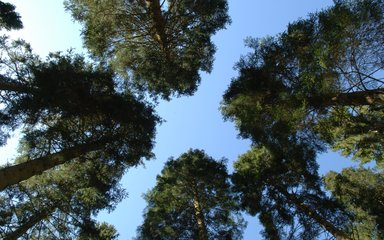
Challenges facing the spruce species
As its name suggests, Norway spruce was originally from Scandinavia and is native to the mountainous areas of Europe. Now widespread in the UK, its branches and cones also provide valuable habitat and food for wildlife, including moths and red squirrels. The straight grain, fine texture and toughness of the wood also makes Norway spruce great for sustainable flooring and furniture.
Another type of spruce, Sitka, has also been an important tree for timber. Making up much of England’s conifer forests, it grows well in wetter climates and its wood has many uses. However, regions where this species thrives today are predicted to become too dry for it to survive in future, where summer temperatures could rise by up to 10°C in parts of England by the end of the century.
The UK already relies on importing 80% of the timber it uses. We will always need wood, and the loss of Sitka spruce is a challenge for the future of sustainable homegrown timber.
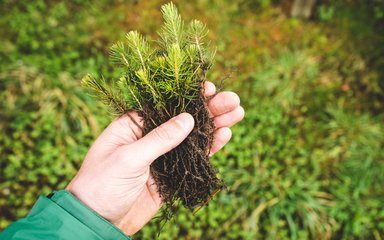
Experimenting and testing different spruce varieties
Norway spruce can cope much better with drought than Sitka spruce, making it more suited to the predicted future climate in England. That's why we’ve begun an experimental planting trial to test varieties of this tree to see which may fare best in the climate conditions we expect 50 years from now. The results will help us adapt and plan future sustainable timber sources.
We’ve planted 2,300 Norway spruce trees in Delamere Forest in Cheshire, grown from seeds sourced in 16 different European locations. Seeds for the planting trial were gathered from Sweden, the Czech Republic, Denmark, Germany, France, and a Forestry England ‘seed stand’ – an area of trees managed to produce high quality tree seeds.
Over the next 25 years, we’ll compare the trees to see which grow the best and assess how they cope after extreme events, such as flooding, drought or pest invasions. We’ll be sharing our results with the other organisations looking after trees as part of the Conifer Breeding Co-operative trial.
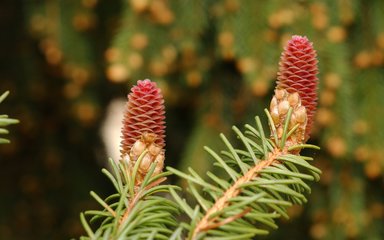
Learning from the results
Our Plant and Seed Supply team and local foresters are looking after the experiment, and will gain valuable insight into which seed is best suited for the future. We can then focus on growing and supplying those varieties in great quantities.
We know to expect wetter winters and hotter, drier summers in the decades ahead and it’s vital the forests we plant and look after can cope with these different conditions, and continue to provide a sustainable source of timber for generations to come.
We’ve only just started this exciting experiment and the saplings we’ve planted are still young. But by Christmas 2046 our trees will have given us important information for climate-resilient forests. So when you choose and decorate your tree this year, spare a thought for these Christmas tree favourites and how they are helping our future forests to thrive!

